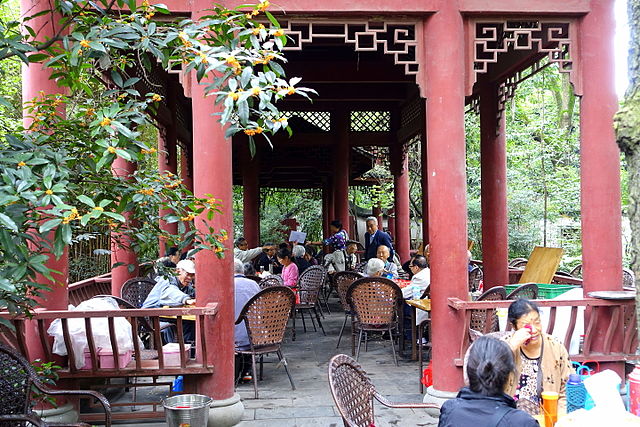Tea ceremony is a ritualized practice of making and serving tea in East Asia practiced in the Sinosphere. The original term from China, literally translated as either "way of tea", "etiquette for tea or tea rite", or "art of tea" among the languages in the Sinosphere, is a cultural activity involving the ceremonial preparation and presentation of tea. Korean, Vietnamese and Japanese tea culture were inspired by the Chinese tea culture during ancient and medieval times, particularly after the successful transplant of the tea plant from Tang China to Korea, Vietnam and Japan by traveling Buddhist monks and scholars in 8th century and onwards.
A Japanese female hostess performs a tea ceremony.
Interior of the Lao She Teahouse in Beijing, China
A Chinese teahouse in Baihuatan Park, Chengdu, Sichuan, China
A Japanese teahouse dating back to the Edo period
Chinese tea culture includes all facets of tea, both physical and spiritual, that have significantly influenced Chinese culture throughout history. Physically, it consists of the history of tea cultivation, brewing, serving techniques, methods of consumption, arts, and the tea ceremony. Tea culture is to take tea as a carrier, and through this carrier to spread various arts. Tea culture is an integral part of traditional Chinese culture. Tea culture is the organic fusion of tea and culture, which contains and embodies the manifestation of a certain period of material and spiritual civilization. Tea culture is the combination of tea art and spirit, and the expression of tea art through Spirituality. It emerged in China in the Tang dynasty, flourished in the Song and Ming dynasties, and declined in the Qing dynasty.
Chinese tea sets
A tea house in Shanghai, China
A tea house in Presidential Palace Garden in Nanjing, China
Song dynasty tea preparation, painted by Liu Songnian.








